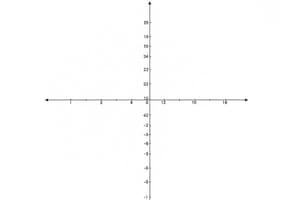Podcast
Questions and Answers
What is the standard form of a linear equation?
What is the standard form of a linear equation?
- $y = mx + b$
- $ax + b = c$
- $Ax + By = C$ (correct)
- $a(x + b) = c$
Which of the following represents a linear inequality?
Which of the following represents a linear inequality?
- $y = 2x + 3$
- $7 = 3y + 1$
- $x + 2 = 5$
- $3x - 4 > 12$ (correct)
If two lines represented by linear equations are parallel, how many solutions do they have?
If two lines represented by linear equations are parallel, how many solutions do they have?
- Exactly one solution
- Two solutions
- Infinite solutions
- No solutions (correct)
What does the slope of a line represent in a linear equation?
What does the slope of a line represent in a linear equation?
In the context of linear equations, what does the term 'intercept' refer to?
In the context of linear equations, what does the term 'intercept' refer to?
Flashcards are hidden until you start studying
Study Notes
Linear Equality
-
Definition: A linear equality is an equation that expresses a linear relationship between two variables, typically written in the form ( ax + b = c ) where:
- ( a ), ( b ), and ( c ) are constants
- ( x ) is the variable
-
Standard Form: The general form is:
- ( Ax + By = C )
-
Where:
- ( A ), ( B ), and ( C ) are real numbers
- ( x ) and ( y ) are variables
-
Types:
- Inequalities: Sometimes expressed in the form ( ax + b < c ) or ( ax + b > c ) indicating relationships that are not equal.
- Systems of Linear Inequalities: Multiple inequalities that together define a region in the coordinate plane.
-
Graphical Representation:
- Graphs of linear equalities form straight lines on a Cartesian plane.
- The area above or below the line represents solutions for inequalities.
- Solutions to equations include all points that lie on the line.
-
Solving Linear Equations:
- Isolate the variable on one side of the equation.
- Perform the same operation on both sides of the equation.
- Check the solution by substituting back into the original equation.
-
Applications: Used in various fields such as economics, engineering, and statistics to model relationships between quantities.
-
Key Concepts:
- Slope: Indicates the steepness of the line (rise over run).
- Intercept: The point where the line crosses the y-axis (y-intercept) or x-axis (x-intercept).
-
Additional Notes:
- A single linear equation can have:
- One solution (intersecting line)
- No solutions (parallel lines)
- Infinite solutions (coincident lines) in the case of systems of equations.
- A single linear equation can have:
Linear Equality
- A linear equality expresses a relationship between two variables, typically written as ( ax + b = c ) where ( a ), ( b ), and ( c ) are constants, and ( x ) is the variable.
- The general form of a linear equality is ( Ax + By = C ) where ( A ), ( B ), and ( C ) are real numbers, and ( x ) and ( y ) are variables.
- Linear inequalities can be expressed in the form ( ax + b < c ) or ( ax + b > c ), representing relationships that are not equal.
- A system of linear inequalities consists of multiple inequalities defining a specific region on the coordinate plane.
- Linear equalities are graphically represented as straight lines on a Cartesian plane.
- Points above or below the line represent solutions for inequalities, while points on the line represent solutions for equations.
- Solving linear equations involves isolating the variable on one side of the equation by performing the same operation on both sides, followed by checking the solution.
- Linear equations can have one solution (intersecting lines), no solutions (parallel lines), or infinite solutions (coincident lines) in the case of systems of equations.
- Linear equalities are used in various applications, including economics, engineering, and statistics, to model relationships between quantities.
- Key concepts associated with linear equations include slope (representing the steepness of the line) and intercepts (points where the line crosses the x-axis or y-axis).
Studying That Suits You
Use AI to generate personalized quizzes and flashcards to suit your learning preferences.




